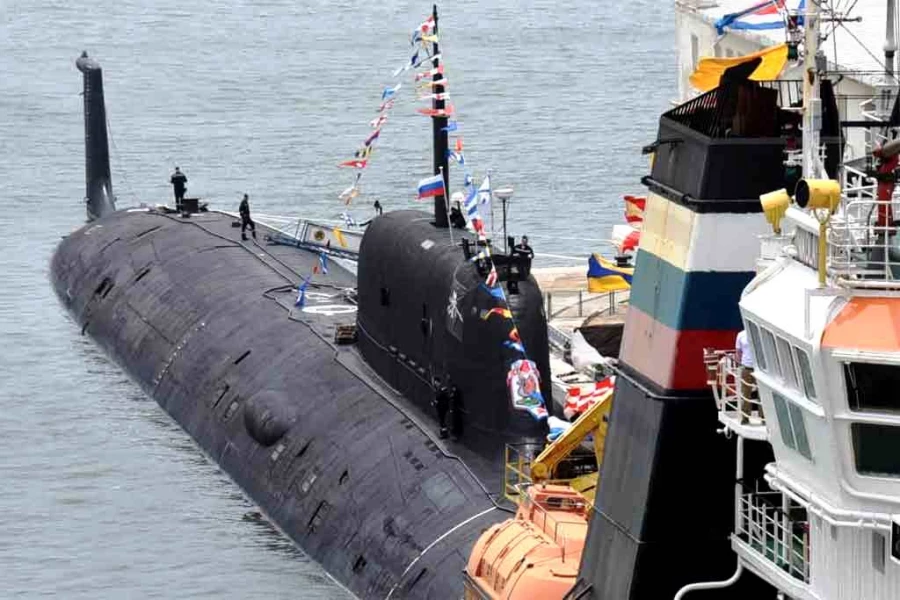In a significant display of geopolitical positioning, the formidable Russian naval fleet anchored at Havana Harbor this week, drawing the watchful eyes of international powers and reiterating the deepening ties between Russia and Cuba.
In a well-orchestrated display of diplomatic might, the Russian fleet comprising of the nuclear-powered Kazan submarine, the impressive Admiral Gorshkov frigate, the Academic Pashin oiler, and the Nikolai Chiker rescue tug, docked for a strategic five-day outreach. As these maritime behemoths sailed effortlessly into Havana Bay, a thunderous 21-cannon salute marked their arrival, matched in vigor by Cuba’s coastal defenses.
This resonant exchange took place in the presence of top dignitaries, including Cuba’s naval deputy chief and Russia’s ambassador, celebrating the strengthening bonds between the two nations. Iconic images capturing this powerful display, akin to scenes from the height of the Cold War, are reminiscent of a chess match on the high seas, with every move signaling subtle strategic shift patterns.
While the United States Navy maintained a vigilant watch of these activities, naval vessels from other nations, including Canada’s HMCS Margaret Brooke and Venezuela’s AB Simón Bolívar, were scheduled to dock in Cuba, highlighting the strategic significance of this maritime location.
Scrutinizing the assets within the fleet paints a picture of formidable prowess. The Kazan submarine, the fleet’s centerpiece, possesses advanced nuclear capabilities, making it unbeatable in its range. With a crew of 64, it can descend to depths of 580 meters and navigate the waters with unmatched agility, powered by a robust nuclear reactor and armed with top-tier weaponry, including hypersonic missiles.
Complementing this undersea titan, the Admiral Gorshkov frigate—a floating command center launched from St. Petersburg in 2018—is the epitome of surface combat vessels. With its fusion of lethal firepower and swift mobility, powered by a hybrid diesel and gas turbine system, it can handle multidimensional threats, underscoring its readiness in an ever-evolving theater of operations.
Yet, this display was more than a mere show of military strength. As these naval assets anchored in Havana, they subtly underscored the discomfort Americans might face with a perceived adversary anchored close to their coast—a sentiment all too familiar to Russia with NATO forces virtually at its doorstep.
By aligning themselves within arm’s reach of the U.S., the Russian navy’s deployment serves as much a reminder of their own naval capabilities as it does a poignant representation of the delicate balance of global power dynamics that define our world today.
